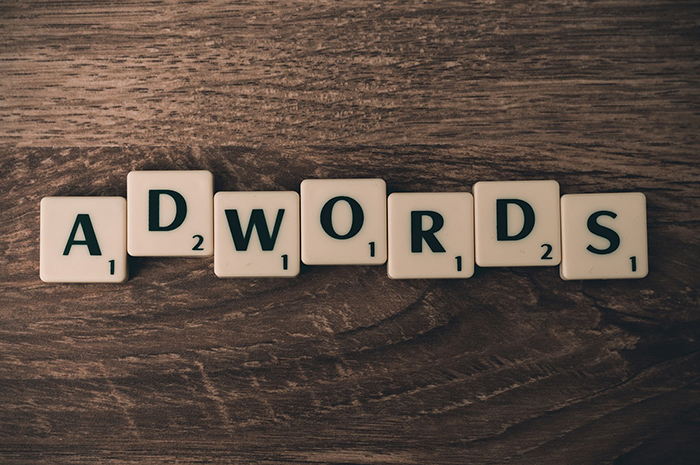
AdWords, you are one darn complicated piece of software.
For tour and activity companies with limited marketing resources, taming AdWords can be a herculean task. Businesses spend countless hours tweaking ads, audiences, and budgets—or make the investment to hire a marketing agency to deal with it.
At the end of the day, many people feel the same way as Lori Pingle, owner of ZipZone Canopy Tours: “AdWords is a workhorse,” she explains. “It’s making us money, but it’s not a huge windfall.”
A former Google AdWords employee can commiserate, “Without the right resources, small businesses really don’t stand a chance against it,” he notes. “It takes a lot to leverage all the features and it needs constant management.”
But it doesn’t have to be this way—you can get more out of your AdWords efforts without having to spend more money than you already do.
Getting started
AdWords occupies a prominent space in the larger world of online advertising. The four major pillars of online advertising are: search engine marketing, display marketing, social media marketing, and mobile advertising. AdWords uses three of them, leaving social media marketing to the likes of Facebook and company.
Now mix in the number of possible ad types (text, ad extension, image, video, product promotion) and cost structures (CPC, impressions) and it’s easy to see why AdWords can be a major time hog.
Ad content appears in Google search listings, or on other websites and mobile apps. In Google-speak, these are Google’s “Search Network” and “Display Network,” respectively.
But at a high level, people will see AdWords ads simply as a result of surfing the web, and that’s why so many business owners use it.
With that background, it’s time to start boosting your AdWords success.
Tip #1: Play teacher
Plenty of businesses rely on marketing agencies to fully leverage this powerful platform. These agencies are worthwhile AdWords allies, but remember that you have something to teach them, too. Your agency might not be familiar with all the internal lingo that you use to refer to your tour or activity. Is it “zip line”, “zipline”, or “ziplining”? Will people search “canopy tour”? These are not obvious questions to a marketing agency that works with a variety of clients.
Take an active role in educating your marketing agency when it comes to keywords, customer behavior, and geographic targeting. Nailing these details is paramount, so remember that in these regards, you’re an expert too.

Tip #2: Know your budget
If you want to make your AdWords account more efficient, start here. It may sound obvious, but a former AdWords employee agrees that few people really understand their AdWords spending.
To set up a campaign you have to specify a daily budget. Oftentimes, individuals make the mistake of setting their budget high thinking there’s no way they’ll reach it. Think again. By setting a budget, you’re agreeing to spend that much per day.
I like to shape my budget by considering the profits earned on the average customer. Hypothetically speaking, let’s say the average customer spends $100 on a tour, of which $75 is profit. I’ll then set my budget to some multiple of $75, which could be $75 per day or $150 per week. Aligning your budget with the applied profit value of your average guest provides an easy way to determine the success of your campaign.
In other words, if you spend $75 per day on AdWords and generate an average of one new customer per day as a result of the campaign, you’re breaking even. If you’re generating less than one customer per day, perhaps AdWords isn’t a profitable strategy for your business, or you should make adjustments to your campaign.
It should be noted that you do not have to spend the profit number you come up with as a minimum daily amount. If $75 is your per person profit number, you can spend $150 per week on AdWords and if you generate two new customers in that week, you broke even.
Of course, for these calculations to work, you need Google Analytics to keep track of your site’s conversions. If you use booking and marketing software to manage your business, you’ll be able to see which online bookings come from AdWords in your “Multi-Channel Funnels” module.
In addition to setting your daily budget, you’ll also need to set bids for the different keywords in your campaigns. The higher you bid, the more likely your ad will appear for that keyword. But this also means you’ll burn through your daily budget quicker. Google AdWords can provide you with keyword bid estimates, as well as how visible your ads are at a given CPC bid (e.g. you might show up in 30 percent of searches when you bid “x” for the keyword “food tours”, but you could show up in 70 percent of searches if you raised your bid to “y”.)
Now that you’ve figured out your budget, let’s find ways to make it go further.
Tip #3: Understand Google’s Quality Score
The best way to extract the most from AdWords is to make Google trust you. Google’s job as a search engine is to provide its users with relevant results, and that includes AdWords ads.
Many sorry marketers know the perils of unscrupulous AdWords strategies. As Evan Tipton, owner of 3 Rivers Marketing Group, puts it, “When it’s not done right, AdWords is a great way to waste a lot of money.” But when executed properly, AdWords can be a meaningful marketing tactic. The key to success lies in your ad’s Quality Score.
Boosting your Quality Score will maintain or improve your ads’ positions, for less money. As with most Google algorithms, we don’t know the exact recipe, but we do know some of the important ingredients:
- click-through rate (CTR)
- landing page experience
- your historical AdWords account performance
- keyword and ad copy relevance
There’s no sugarcoating it—you’ll have to invest a significant amount of time if you want to deeply influence these factors to improve your Quality Score. But there are a couple quick ways you can move the needle:
- Populate your ad extensions: These are other relevant pieces of information that you can add to your text ads. They’ll help your ads entice potential customers with extra details about what you have to offer. (If you want to show off your Google+ cred, take advantage of review extensions.)
- Customize your display URL: Surprise! The URL shown in your ad does not need to be the same as the final page destination. As long as the root domain in the ad and your site are the same, you can make the display URL anything you want. URLs that closely mirror your ad content tend to generate higher CTRs than generic URLs.

Remember, these are quick fixes. For your AdWords to have lasting impact, you should focus on the four main tenets of your Quality Score.
Tip #4: Don’t be afraid to experiment
Would you rather run an AdWords campaign for “boat tours key west” or “things to do in Key West”? It’s the perennial question for those playing the AdWords game: do I go for the bigger audience or the cheaper keywords?
The answer to that is to first pursue keywords where you’ll provide the most relevant content, and you can find those through experimentation.
Think back to grade school when you learned the scientific method. It’s good practice to replicate those steps when testing your AdWords campaigns. To start, observe your customers and your competitors. Then ask probing questions about your ads, such as: “Are people within a 50 mile radius more likely to click my ads than people outside of that range?” Next, formulate a hypothesis: “I believe so because I mainly serve locals, and my out-of-town customers are more likely to book once they’re in-destination.”
Once you have your initial thoughts, you can test them by fiddling with your ads and audiences. What you find may surprise you. In Pingle’s case, she discovered that “ziplining” was far more popular a keyword than either she or the marketing agency had thought.
But keep a close watch to prevent your experiments from going awry. As a rule of thumb, kill experiments that tank after two weeks and go back to the hypothesis drawing board. Remember, there’s a place for hunches and gut-feelings in marketing—but AdWords is not it. As Tipton warned earlier, AdWords can be a punishing activity for the imprudent marketer.
Conclusion
Despite its complexity, AdWords can be an important sales tool. By following these easy steps, you can extract more value out of your campaigns without depleting your budget.



